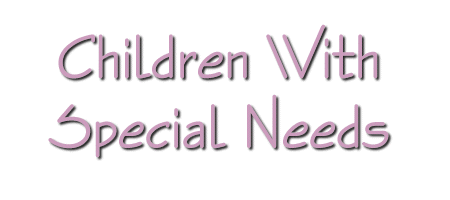|
 Autism
Autism is a relatively rare multifactorial disorder
that affects between 3 and 5 out of every 10,000 school-aged children. Males outnumber
females by approximately 5 to 1. The cause is currently unknown, but inheritance plays at
least some role, since there is a high concordance in identical twins but not fraternal
twins. Recently, a genetic study has shown that autistic children are more likely to have
inherited a shortened for of the serotonin transporter gene, HTT. This is but one gene
that codes for a protein that reabsorbs serotonin after it has been released. Additional
risk factors might include rubella, and problems during pregnancy, labor and delivery.
Depending on the study you believe, up to 75% of autistic children may also be retarded.
Many autistic children are also at increased risk of developing seizure disorders,
especially during their teen years. The disorder is characterized by impairment in social
interaction and communication coupled with repetitive and stereotyped patterns of behavior
("stimming"). It is characterized as a pervasive developmental disorder (PDD).
One of the problems with autism is that the diagnosis is based on subjective criteria and
not everyone can agree on how it should best be classified. The umbrella diagnosis is
pervasive developmental disorder, which not only includes autism, but several others as
well, including Asperger's disorder, Rett's disorder, chilhood disintegrative disorder and
pervasive developmental disorder not otherwise specified (PDD-NOS) . Related disorders
include Fragile X Syndrome, Landau-Kleffner Syndrome, William's Syndrome, Angelman
Syndrome, and Prader-Willi Syndrome. The criteria used to make the diagnosis of autism are
not absolute, and change from time to time. However, since pervasive developmental
disorder is becoming a buzz-word in school systems and more and more children are becoming
labeled, it is becoming more and more difficult to discern "true autism" from
all the other disorders in the PDD category. Potentially even more confusing in the
realization that all cases of autism are not the same. Autism appears to be the final
end-product of several different disorders that share similar social, language and
neurological abnormalities.
Autism is usually diagnosed in children 2-4 years of age, but signs may be evident much
earlier. The autistic child may arch backwards when picked up, or act limp to avoid the
physical contact. Some autistic children don't fuss at all, while others may be agitated
or extremely fussy, even self-injurious.
Some autistic children meet important developmental milestones, such as talking and
walking, even ahead of schedule. It is often distressing to parents when some of these
children later lose some of these skills, so -called 'regressive autism'. Other autistic
children had developmental delays from the onset.
The most disturbing features of autism are the lack of eye contact, self-stimulatory
behaviors, self-injury, abnormal sleep patterns, sensory impairments and food preferences.
This is extremely variable in individual children.
A common feature of autism is an insistence on sameness, and autistic children often
function best with a strict routine. Transitions can be particularly awkward for these
children, such as new schools, vacations, introduction of new foods, etc.
In autism, there appears to be at least 4 medical problems that may coexist in
affected individuals:
Problems with the cerebellum and cerebrum
Impaired nutrient absorption (leaky gut)
Defective cell-mediated immunity
Neurotransmitter defects (serotonin)
The problems with the cerebellum affect balance, attention, and proprioception (perception
resulting from stimuli to muscles and tendons). Two areas in the limbic system are also
thought to be involved, the amygdala and the hippocampus. Researchers often characterize
the changes seen as "faulty wiring" of the brain so that autistic children do
not fully perceive the world the way we do. Accordingly, they often don't respond to their
names, engage in unusual behaviors, don't look you in the eye, and have problems with
speech and socializing with others. Without intervention, affected children may retreat
into their own world and become oblivious to human contact. However, this need not be the
case.
Today, more than ever, autism need not be a diagnosis that implies a poor prognosis. With
early intervention, fantastic strides have been made and many affected children can become
maintsteamed in school. However, intervention is best done early and with intensity.
There is no consensus as to the best approach to treating children with autism. If you
speak with 10 parents, you'll likely get 12 opinions as to how to proceed. Most physicians
are used to treating medical problems with drugs; psychologists want to counsel,
occupational and speech therapists have their own approaches. However, the two options
that seem to have the best track record are applied behavioral analysis (ABA) and
nutritional supplementation. These are not the only options and are not without lots of
controversy, but they have good track records for effectiveness and safety.
Applied Behavioral Analysis uses learning theory to teach autistic children how to play,
interact and perform basic skills. The notion was pioneered by Lovaas at UCLA and has been
modified in several school settings such as the Princeton Institute and Alpine School,
both in New Jersey. For the most part, the therapy is done one-on-one with a therapist and
the autistic child and this intervention can occupy 30-40 hours a week. The results of the
initial Lovaas study revealed that over 40% of the children receiving 40 hours of therapy
per week became mainstreamed in school and had a good outcome. Behaviorists often utilize
occupational and speech therapists in their programs.
Nutritional intervention has made quite a difference for many autistic children. Part of
the reason is that the intestinal problem makes autistic children more susceptible to food
allergy and food intolerance. However, we also know that some nutrients help increase
oxygen utilization in the brain, counteract the effects of abnormal neurotransmitter
levels, and interfere with adverse food metabolites. This is covered in more detail in
Nutrition and Autism. It is important to note that some of the abnormal behaviors seen in
autism appear to be the result of toxic breakdown products of certain food ingredients
such as casein and gluten. Others may be do to food intolerance and sensitivity to food
items.
The immune problems and neurotransmitter defects are only now being more completely
studied in autism. It is known that children with autism do have abnormalities in their
immune systems that make them more susceptible to certain infections, including yeasts
(especially Candida albicans) and certain bacteria (e.g., Clostridium difficile).
In autistic children, it appears that there is a neurotransmitter imbalance, primarily
involving serotonin and dopamine. Accordingly, autism may share some neurotransmitter
defects with conditions such as schizophrenia. Preliminary research has shown that
tryptophan and serotonin (5-hydroxytryptamine) levels tend to be higher in autistic
children and hair magnesium tends to be lower. Drugs that block dopamine and serotonin
receptors (e.g., risperidone) or inhibit serotonin transport (e.g., clomipramine) have
been used to treat ritualistic and self-injurious behaviors in autistic individuals.
Preliminary research suggests that hypersupplementation with magnesium and pyridoxine
(vitamin B6) tends to improve behavioral problems in autistic children. Another nutrient,
inositol, has been used in the treatment of obsessive-compulsive disorder as well as the
compulsive behaviors demonstrated by some autistic children. Doses vary from 1-6 grams,
three times daily. Based on studies done in animals, some digestive enzymes may also have
an effect on neurotransmitter levels, especially dopamine.
As we learn more about autism, we realize that there will never be a simple solution to
the problem. However, if we embrace the information that provides us with clues to the
different aspects of the disorder, we are bound to increase the success rates even higher.
~ INFORMATION ON TREATMENTS ~
Early Intensive Behavioral Intervention
(Applied Behavioral Analysis)
http://pages.prodigy.net/damianporcari/recovery.htm
Nutritional Intervention
http://www.autism-zone.com/autism/nutri.htm
Sensory Integration
http://home.earthlink.net/~sensoryint/
Auditory Integration
http://www.teleport.com/~sait/
Music Therapy
http://www.autism.org/music.html
Neurological Reorganization
http://www.ncn.com/~nntc/autism.html
Physical Exercise
http://www.autism.org/exercise.html
TEACCH
http://www.unc.edu/depts/teacch/
Source:
Autism Review, ©1997 Lowell Ackerman PhD

Back to
Children With Special Needs Main Page

Web Design & Graphics by Creative Concepts Design© 1995-2000 |


